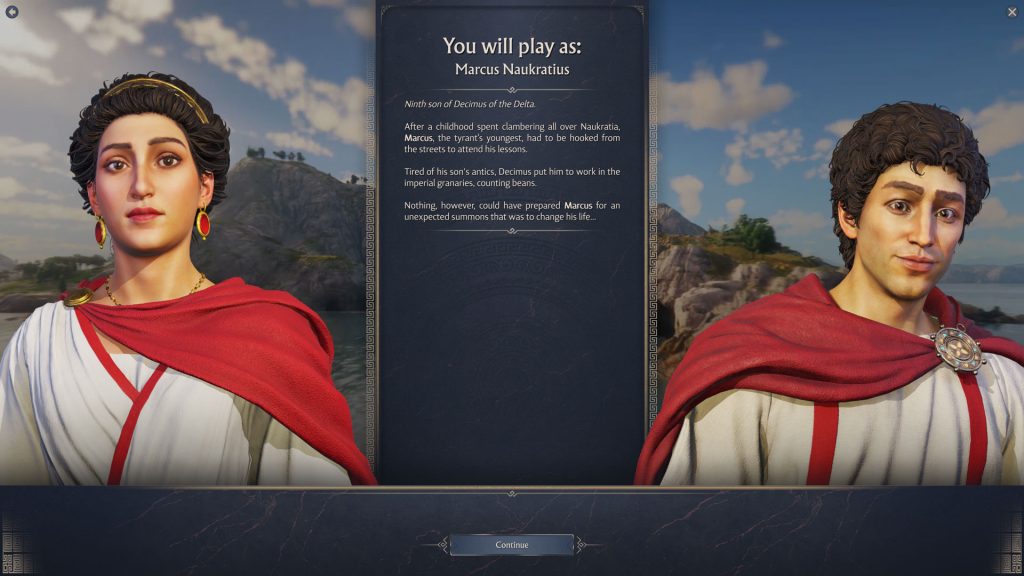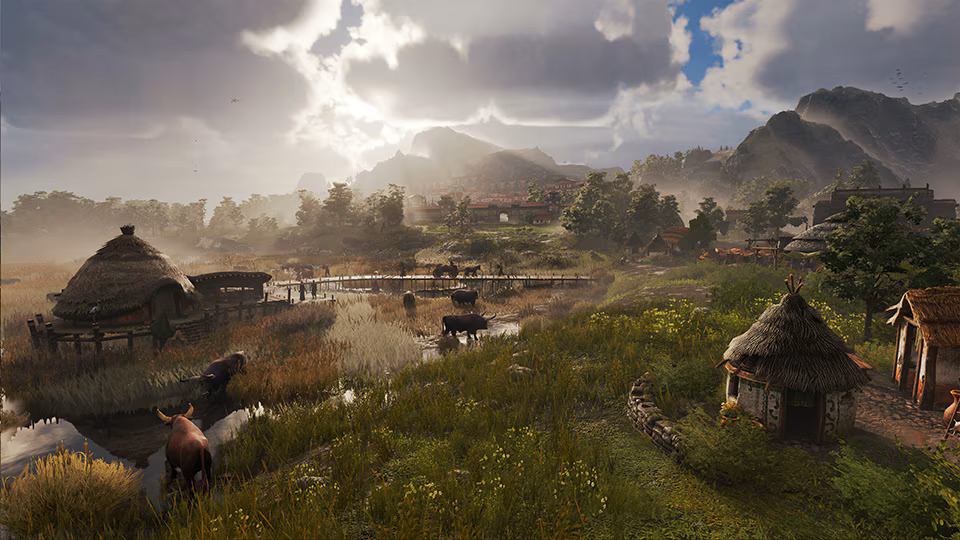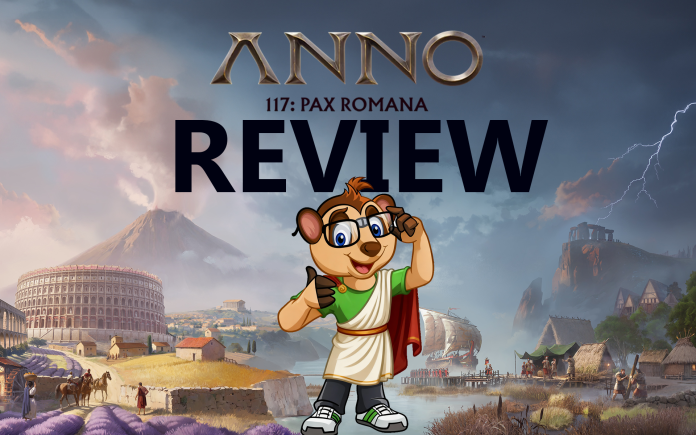After the industrial heights of Anno 1800, the legendary city-building series takes its most ambitious leap yet—not forward, but back to the very height of classical antiquity. Anno 117: Pax Romana puts you in the sandals of a Roman Governor, tasking you with expanding the empire not just with bricks and marble, but with ideology. Developed by the veteran Anno team at Ubisoft Mainz, this is a deep, mechanically rich, and thematically smart simulation that, unfortunately, is held back by a legion of technical and usability fumbles. It’s a game of grand ambition undermined by the smallest of details.
Anno 117: Pax Romana is a city-building and real-time strategy game developed by Ubisoft Mainz. It is set for a full release on November 13th, 2025, and will be available on PC (via Steam, Epic Games Store, and Ubisoft Connect), PlayStation 5, Xbox Series X|S, and Amazon Luna. The game features a full story mode, a traditional sandbox, and options for both co-op and PvP multiplayer.
Story
The narrative places you in the year 117 AD, at the peak of the Roman Empire under Emperor Trajan. You take on the role of a Governor, with the choice to play as one of two siblings: Marcus or Marcia. This isn’t just a cosmetic choice; each character has a unique backstory and motivation for their appointment, adding a personal, character-driven layer rarely seen in the genre. Your core mission is to manage and expand your assigned provinces, but the real story lies in the central conflict: how will you govern? You are constantly forced to choose between enforcing Roman assimilation or respecting the local Celtic customs, a decision that has a profound impact on your economy, your citizens’ happiness, and your standing with the Emperor.

Gameplay
For anyone who, like me, hasn’t touched an Anno game in years, the game is surprisingly intuitive and welcoming. It does an excellent job of guiding you without being restrictive, and you can get ahold of the core loop quickly. I started in Latium, the heart of the empire, which serves as an excellent starting point. The progression felt natural, and the challenge was balanced. The difficulty is certainly present—this isn’t a simple game—but it feels far more manageable and less punishing than old-school city-builders like Pharaoh or Caesar III.
The game truly shines in its new mechanics. When you govern the flooded marshes of Albion, for instance, you must decide how to upgrade your base-level residents. You can “Romanize” them into Mercators, who demand sausages and bread, or let them maintain their Celtic traditions as Smiths, who require cheese and beer. Running two entirely separate supply chains to keep a mixed populace happy is a brilliant and engaging challenge.
Best of all, the game lets you play at your own pace. If you feel overwhelmed by tasks, you can largely ignore them and focus on the pure joy of building your city. The focus is squarely on being a city-building sim, not a war game. There’s no need to raise large armies, and the game doesn’t pressure you into fighting neighbors. There are also massive quality-of-life improvements, chief among them being the ability to schedule research. This feature is huge; you can queue up multiple technologies, and the game will automatically research them in order, a godsend for a mechanic that is otherwise easy to forget.

However, this is where the Pax Romana begins to crumble. The building system, while intuitive at first, becomes increasingly frustrating. You’ll place a new production building only to discover it requires a huge amount of adjacent land for farms or pastures—space you no longer have—because the game never told you this requirement upfront. Ship map navigation is also not great, feeling small and counter-intuitive.
As your city grows, the tasks become crowded and hard to follow, leading to a sense of cognitive overload where it’s impossible to pay attention to everything at once. But the single biggest problem is the user interface. I fully agree with the community consensus: the UI is not great. It feels like a console port, with tiny, dark icons that are incredibly easy to miss and blend right into the background. The quest log is a cumbersome, thin sliver that is a genuine pain to navigate. You are building a grand, majestic empire, but you’re forced to do it by squinting at microscopic, poorly designed menus.
Visuals and Audio
Visually, Anno 117 is beautiful. The art direction is fantastic, and the distinction between the sun-drenched rolling hills of Latium and the misty, atmospheric marshes of Albion is a highlight. That said, the graphics are “good,” but they are not so mind-blowingly impressive as to justify the performance cost, which I’ll get to shortly.

The audio is a more personal and profound disappointment. As a Romanian, I have a decent ear for how Latin-based languages should sound. The developers’ choice to use very British accents for the characters is jarring and sounds really bad. It completely shatters the immersion, pulling you out of ancient Rome and dropping you into a medieval fantasy film.
Performance
Let me be blunt: the performance is NOT GREAT. I am running the game on a powerful, albeit slightly older, rig with an Intel i9-10900k, an RTX 3090, and 128GB of RAM, with the game installed on a fast NVME SSD. At 4K resolution with no DLSS, the game is unplayable. To get a stable framerate at 4K, I was forced to drop the settings to “High” and enable DLSS. This level of performance is simply not justified by the visuals on screen. I strongly suspect the integrated Denuvo Anti-Tamper DRM system, which has a history of causing performance issues in other PC titles, is a major culprit here.
Conclusion
Anno 117: Pax Romana is one of the most frustrating games I’ve played in a long time, because it is so very close to being a masterpiece. At its core, this is a brilliant city-builder. It’s accessible to newcomers, deep for veterans, and features fantastic, thoughtful mechanics like the cultural assimilation system and the “play at your own pace” design. The schedulable research queue is a top-tier QOL feature.
But this brilliant game is trapped inside a poorly optimized and badly designed shell. The abysmal performance—even on high-end hardware—is unacceptable, and the “Great Empire, Tiny Icons” problem is real. The cumbersome, “console-first” UI actively fights you at every turn, making governance a chore. Anno 117 is a monumental builder plagued by a thousand tiny cuts. It’s a game I desperately want to love, but one I can only recommend to the most patient of governors until it receives some serious patches.




